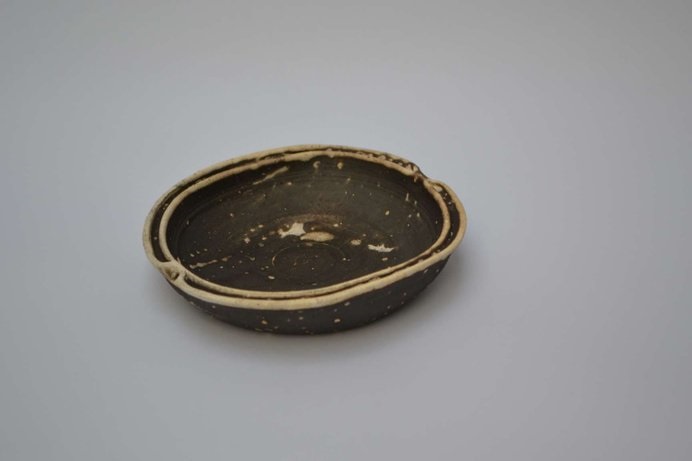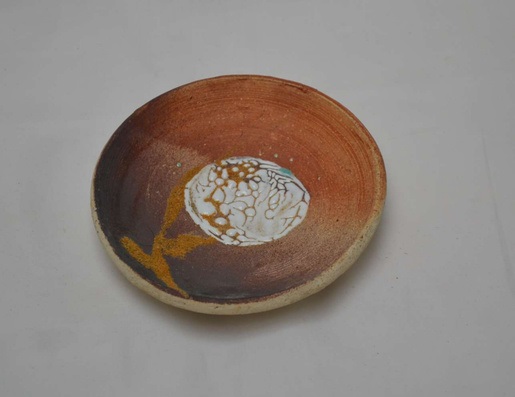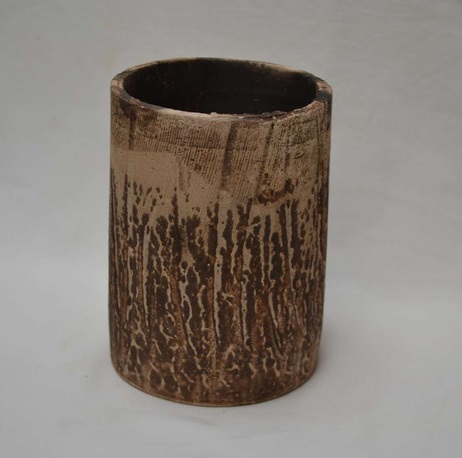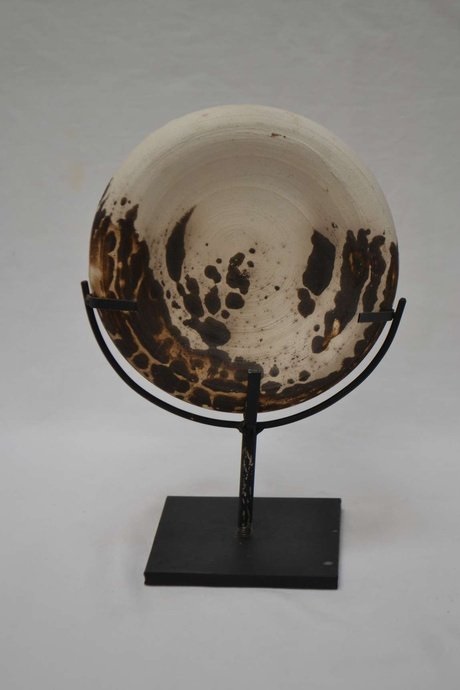Written by: Haroon Shuaib
Posted on: November 11, 2021 |  | 中文
| 中文
(L to R) Nabahat Lotia is busy in making pottery and Clay, All black Obvara fired pot
Once humans discovered that clay, found in abundance all around, mixed with water can be molded into vessels and utensils, the pottery industry began. Soon man was baking pots in fire to make them durable, experimenting with composition of clay, discovering new shapes, colours and designs. The oldest known ceramic is from a small settlement of Czech Republic – a remnant of 28,000 BCE Paleolithic period. In the Xianrendong cave of China, fragments of pots from 18,000-17,000 BCE have been found. Urns, pitchers, bowls, dishes and decorative items, ceramics kept evolving as did civilizations and became an intrinsic part of human culture. A product of three basic elements: earth, water, fire, the three dimensionality of ceramics with space within and around, also brings the fourth element air into the realm of perception.
Nabahat Lotia spent most of her childhood in her village called Prem Nagar, near Lahore. As a child, her favorite preoccupation was crafting small pottery pieces. Always inclined towards creative pursuits, Nabahat took up ceramics as her medium of choice later in life, working with local potters of Pakistan for over 25 years, attending residencies and workshops, teaching and showing works in Pakistan, Bali, Toronto, New York, Turkey and Srilanka. In her exhibition at Khaas Contemporary Gallery of Islamabad, titled, ‘OB-WAH-RA!’ running from the 4th to the 18th November, Nabahat is displaying her mesmerizing ceramic` pieces created using the ancient firing technique called Obvara.
Obvara firing is an Eastern European technique that leaves intriguing, almost mystical details on ceramic pieces, resulting from exposure to a mixture of flour, yeast, sugar and water. To get the beautiful finish, bisque fired pots baked in a Raku kiln are dipped in the mixture and then immediately plunged into cold water to stop any further changes. Contact with mixture gives the ceramic pieces unexpected organic accents, details, and textures in serene earth colours. ‘I titled this exhibition Ob-Wah-Rah as my homage to the technique of obvara. ‘Wah’ in Urdu is an expression of amazement and appreciation, and this is how I am showing my appreciation for more earthy and organic methods of finishing my ceramic pieces. I have been glazing my work previously, but overtime discovered alternate and more organic firing techniques,’ she says. ‘I am myself amazed why I had not tried obvara technique before, as it is a very ancient technique and widely practiced across the world,’ Nabahat adds.
From smoke smeared bowls and pots to wood fired boxes with lids, Nabahat’s collection on display at Khaas Contemporary Gallery is fascinating for the diversity of forms, shapes but most of all for the impact the unique method of obvara has displayed on each piece. The muddy hues, ranging from pinks to browns to almost charcoal black, lend each piece a peculiar mood. The lights and shadows, matt to glazed surfaces, spherical to asymmetrical forms and the monochromatic palette of colours elicit a very calming and contemplative mood in the viewer.
‘My love for clay and what stories it holds has led me to where I am. Imagine if clay could speak, the secrets it would divulge and the tales it would narrate. Everything comes from clay and returns to it – this fascinates me,’ Nabahat reflects.
Nabahat has also put together an enormous collection of material as she continues to document and archive the pottery heritage of Pakistan by filming, photographing and interviewing traditional master potters of Pakistan. While spending hours practicing her craft with the traditional pottery makers of Lahore, she realized that it was important to archive this precious heritage of the land and also introduce new design aesthetics and techniques to the traditional craftsmen who have been making the same monotonous designs for generations. As she learnt the craft from them, she helped them create new styles and exhibit their work for more appreciative audiences.
She contributes in popularizing the ceramic art, often considered not as a mainstream art form in art circles, by conducting regular workshops for young and aspiring ceramic artists. By disseminating her knowledge to the young generations, and by accommodating firing opportunities at her studio for ceramists that may not have such facilities, Nabahat is making her contribution to keeping this relationship of creativity alive between clay and Pakistani society.




You may also like: